Earlier this year ableMove undertook an aviation survey that considered the views of disabled people during COVID-19. To identify disabled passengers key concerns with flying and when might they expect to fly again in a COVID-19 world.
6 months on from the initial survey, the global landscape has changed. It is relevant to now understand whether peoples perceptions of flying has changed since May earlier this year.
Respondents answered the same questions as in the previous survey to ensure a comparison was possible. Additional questions covered likely engagement of the disabled community with industry in advisory groups and consultations, as well as views on those who have travelled with a disability during COVID-19.
The main comparisons and findings from the survey
It is clear that since May, people are now less confident in flying until there is a vaccine. But a significant portion of disabled people are still considering flying.
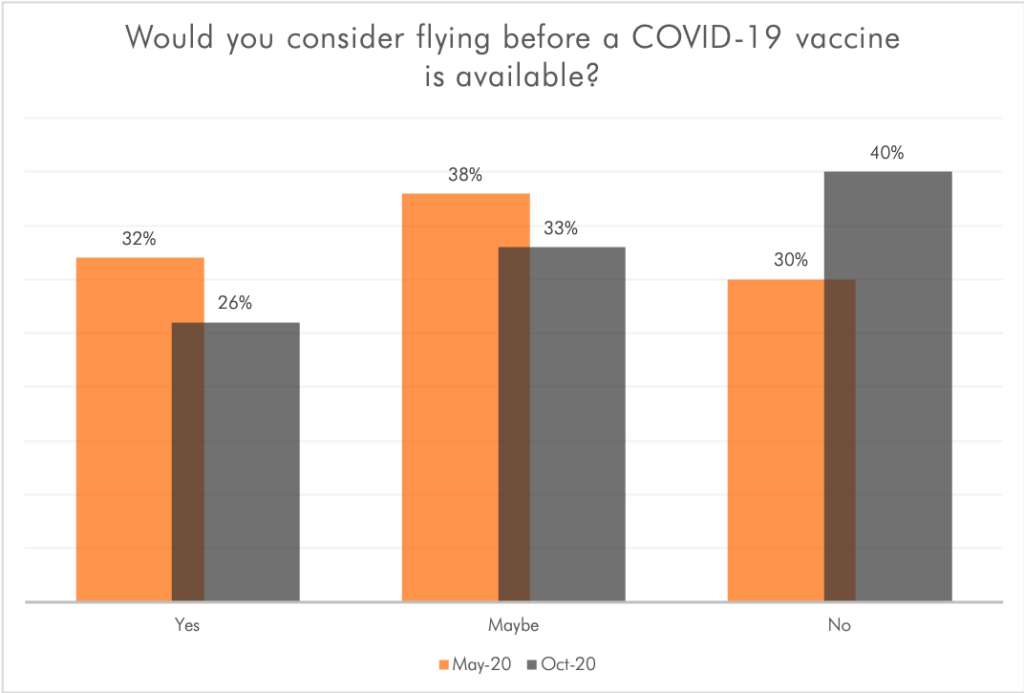
According to research reported by the Independent (a UK newspaper), 4 in 10 people have been financially impacted by Coronavirus. It is clear from surveys that disabled peoples financial constraints have not impacted their decision to book future travel by air.
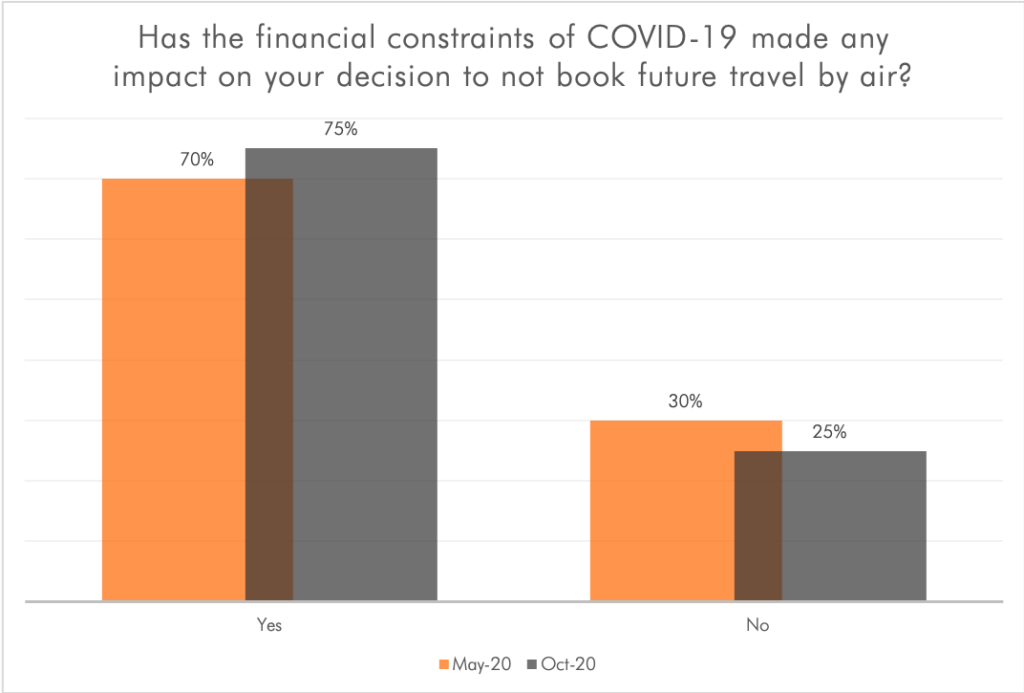
After assessing peoples willingness to fly without a vaccine, coupled with consideration of peoples financial impact. Respondents identified when they visage being able to fly next. Clearly people are much less likely to fly in the shorter term (in the next few months). With people preferring to hold on for 6-12 months before flying again. There appears to still be much uncertainty to give disabled passengers the confidence and trust to return.
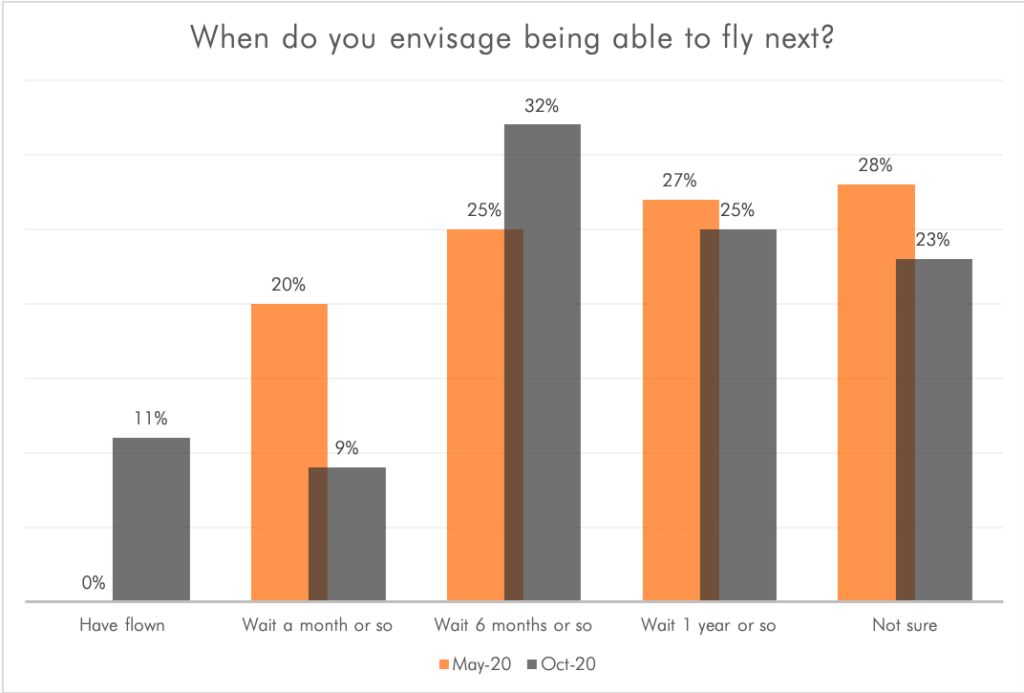
Respondents also identified where they would be willing to fly to when they get round to flying again. Interestingly, there appears to be a rise in domestic travel. People clearly feel more confident travelling closer to home.
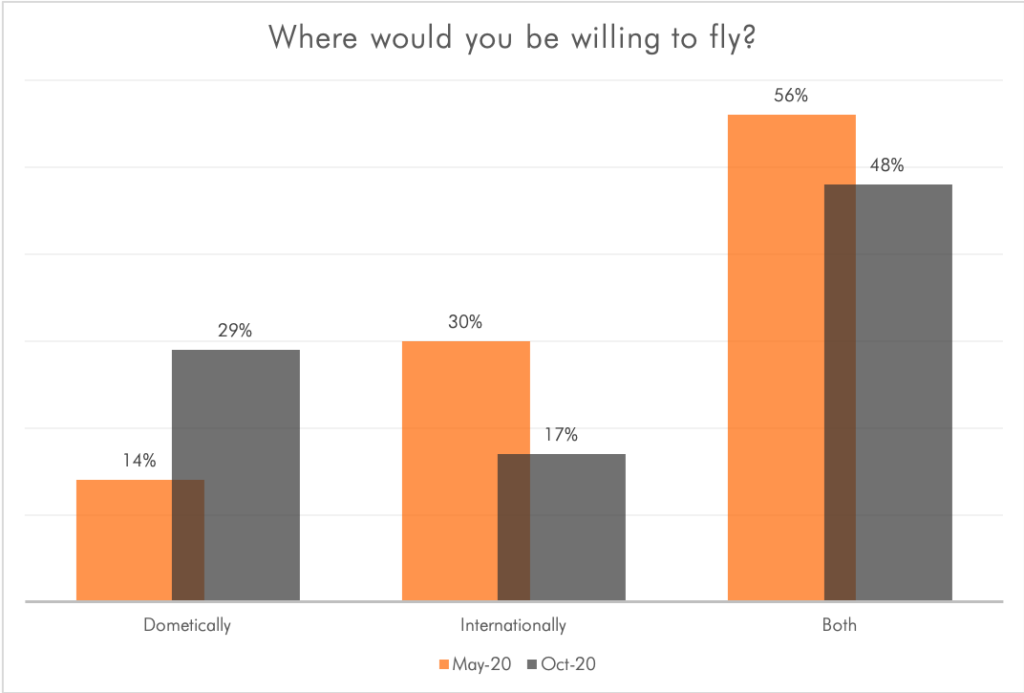
To provide greater insight as to why many disabled passengers are still opting not to fly and what gives them most cause for concern. Here is a list in order of most cause for concern by the respondents:
- Sitting/being in close proximity to others, particularly onboard aircraft
- Air conditioning / recycled air inside the cabin
- Being assisted by special assistance – particularly for wheelchair users
- Wearing face masks for long periods
- Catching the virus abroad or quarantined
- Not understanding people with face masks on
Given flights have resumed, disabled people have been flying. Therefore, it was important to give respondents the opportunity to share their experiences of flying during COVID. So the following questions were asked.
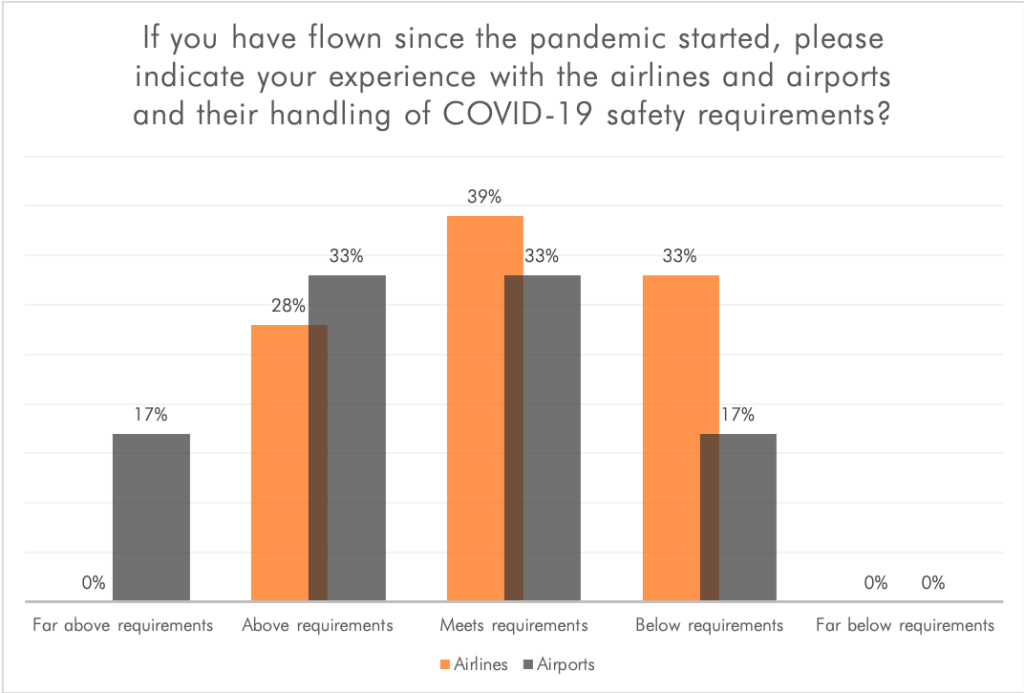
Overall the aviation industry is positively handling COVID-19 safety requirements
The statistics suggest the industry is successfully managing COVID-19 safety requirements inline with passenger expectations. And should be a re-assuring message to the disabled community and further a field that aviation is a safe environment to travel. However, do the respondents suggest others to travel based on how they felt.
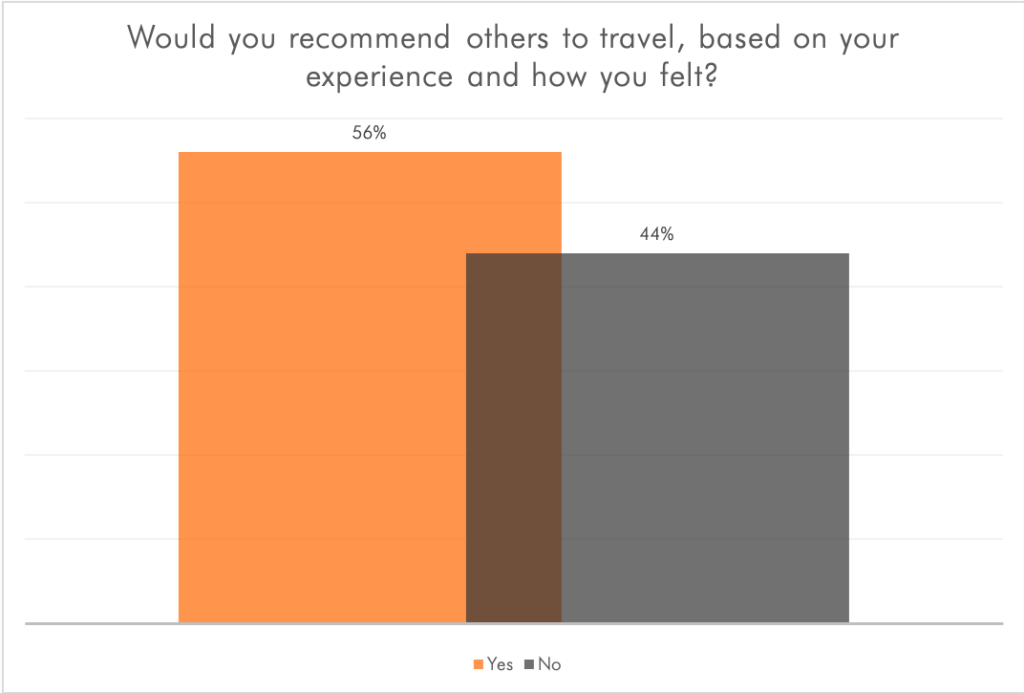
It’s clear that although people may feel safe when travelling, due to nature of COVID-19, people are still feeling uneasy at recommending others to travel. Suggesting that most believe it is down to ones individual risk appetite to fly. Which could be a whole host of different variables such as government restrictions, regional lockdowns, testing facilities and more.
COVID-19 has accelerated the industry to advance its implementation of technology to reduce the amount of touchpoint areas to reduce the risk of transmitting infections. However, such technologies could have a significant impact on disabled people and their ability to navigate airports. And as aircraft look for long term solutions to make their cabins more robust to breakout of infections in the future, potential redesigns of cabins expose significant implications to those with disabilities.
It is critical in all areas across the aviation industry to ensure disabled people and their insights are captured at different stages into new designs, process, training and technology to ensure disabled people and their journeys are as seamless and independent as possible.
We therefore asked respondents if they would be willing to support the industry in consultations, advisory groups etc.
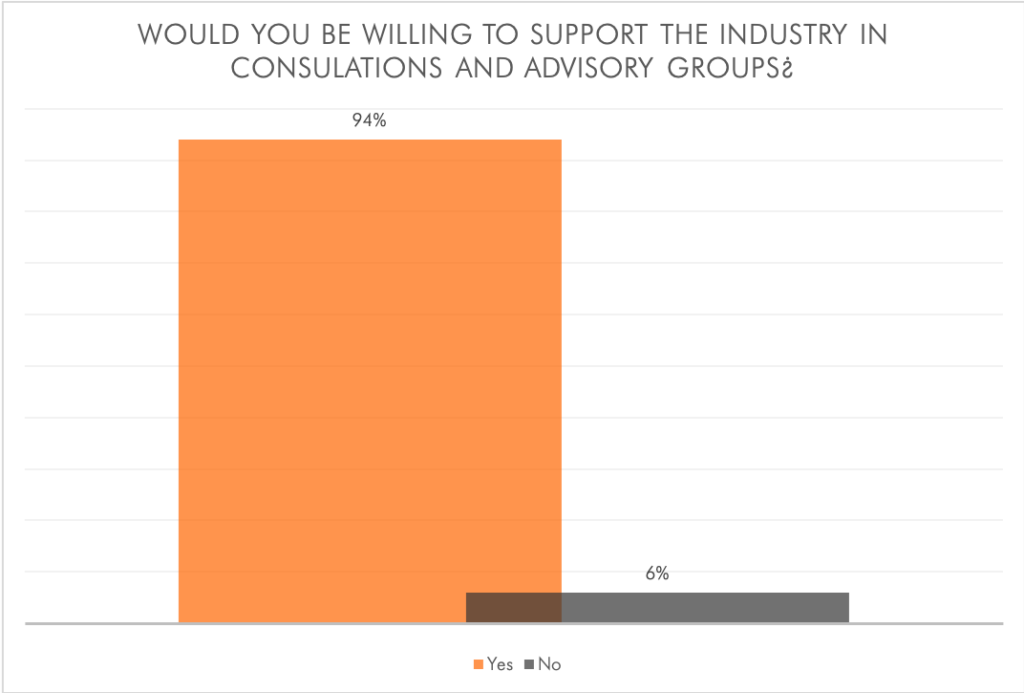
That concludes the research for this year and the impact COVID-19 has had on the disability community and of course the industry. Hopefully this insight has been valuable, providing a clearer picture of when people might return to the skies with a disability.
Thankyou
Thanks to everyone who has supported the survey. Without you, this insight for the industry would not have been possible.
For more information, please contact:
- Josh Wintersgill
- Telephone: +44(0)7770510766
- Email: joshwintersgill@ablemove.co.uk
Notes for editors:
- ableMove – award winning transfer device for wheelchair users to use when being lifted on and off aircraft. You can follow us on Facebook or Twitter using @Able_MoveUK
- Across the two surveys, 500 disabled people across the globe shared their thoughts on flying in a COVID-19 world with a good variety of mobility/impairments and geographical responses across Europe, America, Asia, Australia/New Zealand and Africa






Leave A Comment